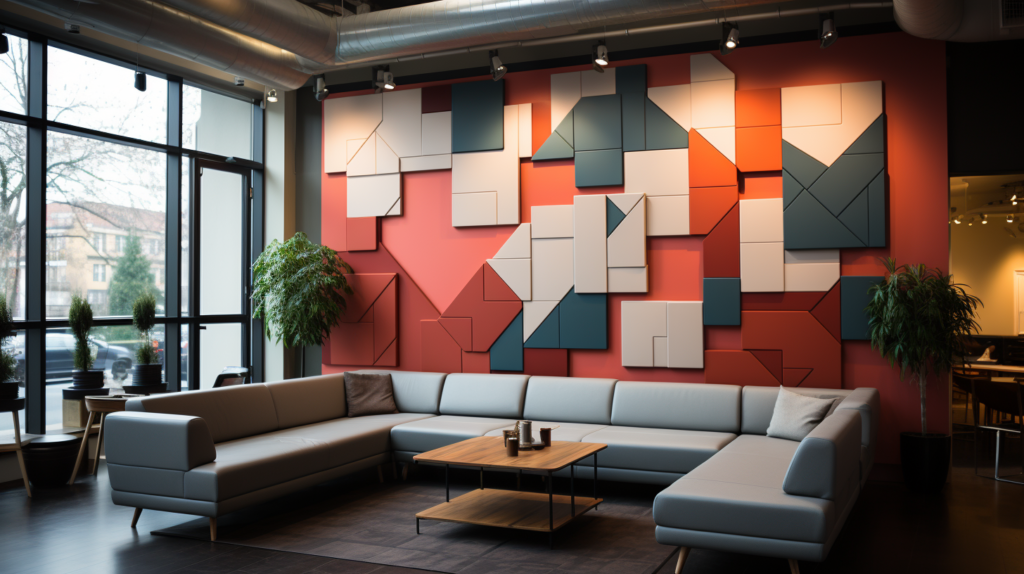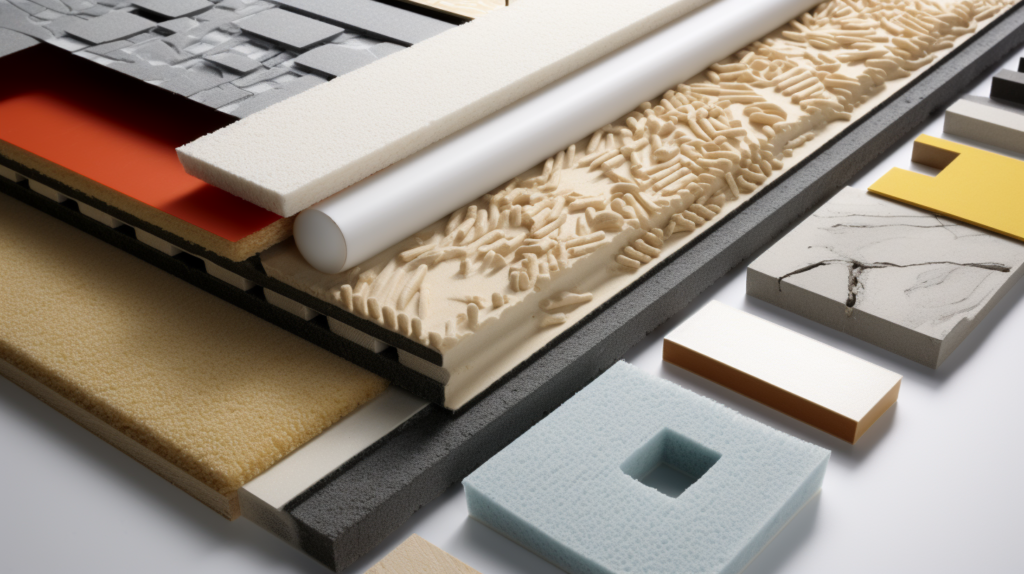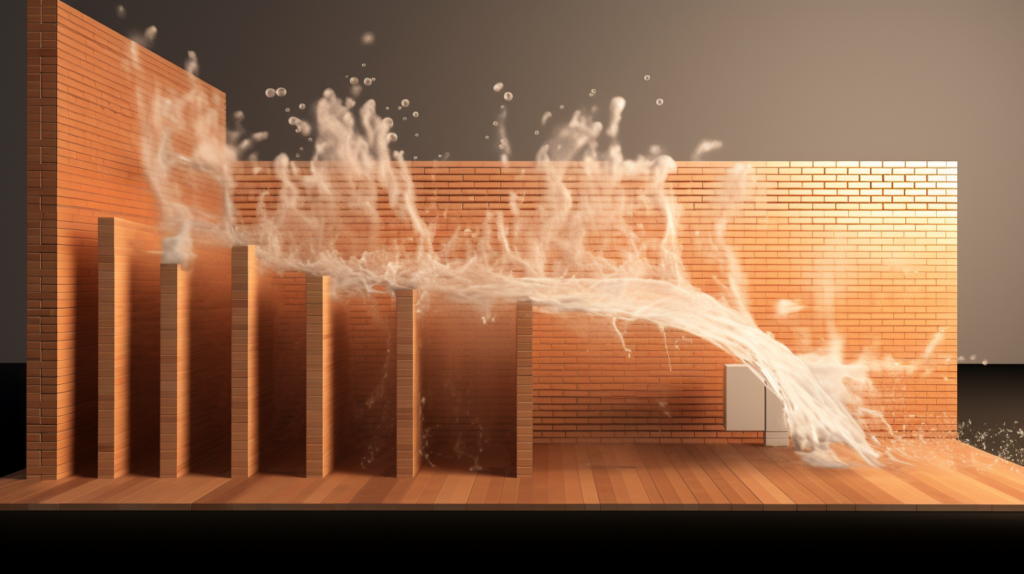Ever tried to focus on a task or find a moment of peace, only to be constantly interrupted by the blaring horns of traffic, the distant hum of machinery, or the chatter of neighbors?
It’s moments like these that make us question: What is soundproofing?
Soundproofing is more than just creating a barrier; it’s an art and science that bridges architecture, acoustics, and human well-being, transforming chaotic spaces into havens of tranquility.
To truly appreciate the magic behind soundproofing and the myriad ways it enriches our lives, we need a deeper understanding of its principles and applications.
So, let’s dive in and explore the world of soundproofing in all its facets.
What Is Soundproofing?

At its essence, soundproofing is a blend of architecture, science, and an understanding of acoustics.
The goal is to establish an environment where sound is controlled, confined, and calculated.
It’s about creating spaces that serve as sanctuaries from external disturbances or ensuring that internal sounds remain encapsulated.
In today’s urbanized world, with its cacophony of noises ranging from traffic to construction, the demand for effective soundproofing solutions has never been higher.
Beyond the practical aspect, soundproofing is also a testament to our evolving understanding of the importance of sound in shaping our well-being, mental health, and overall quality of life.
Soundproofing Vs. Acoustic Treatment: Understanding The Difference

To the uninitiated, soundproofing and acoustic treatment might seem like interchangeable terms, but they cater to distinct needs.
Soundproofing is a defensive strategy; it’s about fortifying a space against unwanted external sounds or preventing internal sounds from becoming a disturbance to the outside world.
Whether you’re trying to keep the noise of the city at bay or ensuring your home theater doesn’t disturb your neighbors, soundproofing is the key.
Conversely, acoustic treatment is an offensive strategy, aiming to shape, refine, and perfect the sound within a space.
It’s the art of eliminating echoes in a cathedral, preventing feedback in a recording studio, or ensuring that a concert hall carries the softest note to every corner.
Acoustic treatment doesn’t block sound; instead, it refines and perfects it.
The Science Behind Soundproofing

Sound, in its most fundamental form, is energy. When an object vibrates, it sends waves rippling through the medium around it—usually air.
These waves, when they reach our ears, are interpreted as sound. The intensity, frequency, and character of these waves determine the sound’s loudness, pitch, and timbre.
Soundproofing, in essence, is about manipulating these waves.
The Sound Transmission Class (STC) rating becomes crucial here. It’s a standardized measure that gauges how well a material can resist the transmission of sound.
Materials with higher STC ratings are more adept at blocking sound. When planning any soundproofing project, understanding the STC ratings of materials is paramount.
Why Is Soundproofing Important?

Imagine trying to concentrate on work while the relentless sounds of traffic filter through your walls. Or attempting to sleep while a neighbor’s party rages on.
Sound has a profound impact on our mental state, focus, and well-being. Effective soundproofing not only enhances comfort but also health.
Chronic exposure to noise has been linked to an array of health issues, from stress and sleep disorders to more severe conditions like hypertension and cardiovascular diseases.
In commercial settings, soundproofing transcends comfort. In venues like theaters, recording studios, or conference halls, it’s integral to the quality of the experience.
For businesses, effective soundproofing can mean the difference between a successful client meeting and a disrupted presentation.
Types Of Soundproofing Materials

In the vast realm of soundproofing, various materials are engineered and utilized to tackle different sound challenges.
These materials range from naturally dense substances to specially designed compounds and structures.
Let’s delve into some of the prominent soundproofing materials that are popularly used in various settings.
Soundproofing Foam: Mineral Wool and Fiberglass
Soundproofing foam is not just your typical foam.
Made from dense materials like mineral wool or fiberglass, this foam is designed to absorb sound waves, reducing their intensity and preventing their transmission.
Mineral wool, in particular, is known for its excellent sound absorption properties, while fiberglass provides both thermal and sound insulation.
Though not strictly for soundproofing (they are more for acoustic treatment), their dense nature makes them formidable allies in the battle against unwanted noise.
Soundproofing Panels: Nitrile Butadiene Rubber and Polyester Acoustic Panels
In the world of soundproofing panels, Burton Acoustix stands out with its unique construction.
Made from a combination of nitrile butadiene rubber and polyester, these panels are both dense and flexible.
The rubber component gives them mass, making them effective barriers against sound, while the polyester enhances their sound-absorbing capabilities.
When installed on walls or ceilings, they can dramatically reduce sound transmission.
Resilient Channels
Resilient channels are metal structures designed to decouple drywall from the framing.
By creating a break in the structure, they prevent sound waves from finding a direct path through the wall or ceiling.
This decoupling method is especially effective against low-frequency sounds, which are often the hardest to block.
Drywall
While traditional drywall does offer some sound-blocking capabilities due to its density, specialized soundproofing drywall is engineered to be even more effective.
Often denser and sometimes featuring additional layers or materials to enhance soundproofing, this type of drywall can be a significant upgrade over standard versions.
Double/Triple-Pane Windows
Windows are often the weakest link in a room’s soundproofing. Double or triple-pane windows tackle this problem head-on.
By having multiple layers of glass separated by air or inert gas, they create a formidable barrier against sound.
The air or gas acts as a buffer, reducing the energy of sound waves as they try to pass through.
Solid-Core Doors
Unlike hollow-core doors, which can easily transmit sound, solid-core doors are dense throughout.
This density makes them much more effective at blocking sound. When combined with proper seals and sweeps, a solid-core door can be a linchpin in a room’s soundproofing strategy.
Mass Loaded Vinyl (MLV)
MLV is a dense, flexible material that’s loaded with non-toxic metals to give it mass. This mass is what makes it so effective at blocking sound.
MLV can be used in walls, ceilings, and floors, either as a standalone barrier or in combination with other materials. Its flexibility makes it easy to install, even in tricky or irregular spaces.
Floating Floors
A floating floor is not directly attached to the subfloor below it. Instead, it “floats” on top, often resting on a layer of soundproofing material.
This decoupling from the structure below makes floating floors especially effective against impact sounds, like footsteps or dropped objects.
Wall Studs
Wall studs, especially when used in combination with resilient channels or other decoupling methods, can be an integral part of a wall’s soundproofing.
For ceilings, suspended ceiling systems using similar principles can prevent sound transmission from the floor above.
Soundproofing Techniques And Methods

Soundproofing is as much about technique as it is about materials. Adding mass is one of the most straightforward methods.
By increasing the density of a barrier, we make it harder for sound to pass through. This is why a thick brick wall is more soundproof than a thin wooden partition.
Damping, meanwhile, tackles sound energy at a molecular level. By introducing materials that absorb and dissipate this energy, sound transmission is significantly reduced.
Think of it as trying to run through water; the resistance of the water saps your energy, slowing you down.
Decoupling is another critical technique, especially in construction. By ensuring that two sides of a wall or ceiling aren’t directly connected, we create an air gap.
Sound travels poorly through air compared to solid materials, making this gap a formidable challenge for sound waves.
Lastly, no soundproofing effort is complete without meticulous sealing. Sound, like water, will find the smallest crack or gap. Ensuring that every potential opening is sealed is crucial.
Soundproofing Different Areas Of Your Home

Different areas of a home present unique challenges. Walls, especially external ones, are your primary defense against external noise.
Soundproofing them might involve adding an extra layer of drywall with a damping compound in between.
For those living in apartments, internal walls become equally crucial, especially if neighbors have different schedules or lifestyles.
Ceilings and floors, especially in multi-story buildings, are conduits for both airborne and impact sounds.
Someone walking on the floor above can create noise below. Soundproofing might involve floating floors, acoustic underlays, or even decoupled ceiling systems.
Windows and doors are often the weakest links in a home’s soundproofing. Their primary function—to open and close—means they can’t be as dense or as sealed as walls.
Specialized soundproofing solutions, from double-glazing to dense curtains and door seals, can dramatically improve their performance.
And then there’s the challenge of ducts, vents, and other openings essential for a home’s functionality.
These can act as channels for sound and need to be addressed with specialized solutions, from acoustic baffles to dense insulation.
Challenges In Soundproofing

Soundproofing, while effective, isn’t always straightforward. Low-frequency sounds, like the rumble of a truck or the beat of a drum, are notoriously hard to block.
Their long wavelengths allow them to penetrate many barriers that stop higher-frequency sounds.
Flanking paths add another layer of complexity. Sound might not penetrate a soundproofed wall, but it could travel around it, through adjoining walls or floors.
Addressing these indirect paths is as crucial as dealing with the direct ones.
Common mistakes can also undermine soundproofing efforts.
Using the wrong materials, overlooking minor gaps, or not considering the full spectrum of sound frequencies can all compromise the effectiveness of soundproofing.
Cost And Budgeting For Soundproofing

Soundproofing, depending on its extent and the methods used, can be a significant investment. However, it’s also one that pays dividends.
Beyond the immediate benefits of noise reduction, effective soundproofing can increase property values and lead to energy savings, as many soundproofing measures add thermal insulation.
While professional solutions offer the benefit of expertise, the growing market for DIY soundproofing materials and solutions provides options for those on a tighter budget.
The key is to plan, understand the specific challenges of the space, and choose the right materials and techniques.
Conclusion
Soundproofing stands as a testament to humanity’s desire for tranquility amidst the chaos of modern life.
As our world grows noisier, the quest for serene spaces becomes not just a luxury, but a necessity.
Through a blend of science, architecture, and innovation, we’ve developed methods and materials that shield us from the relentless cacophony outside, allowing us to create sanctuaries of peace within our homes and workplaces.
Beyond mere comfort, soundproofing plays a pivotal role in our well-being, mental health, and overall quality of life
As technology continues to advance, and our understanding of acoustics deepens, we can look forward to even more effective and accessible soundproofing solutions in the future.
Whether you’re a homeowner seeking solace, a business aiming for professionalism, or simply someone who cherishes the value of quietude, soundproofing is the silent guardian that stands between the world’s noise and your peace of mind.
